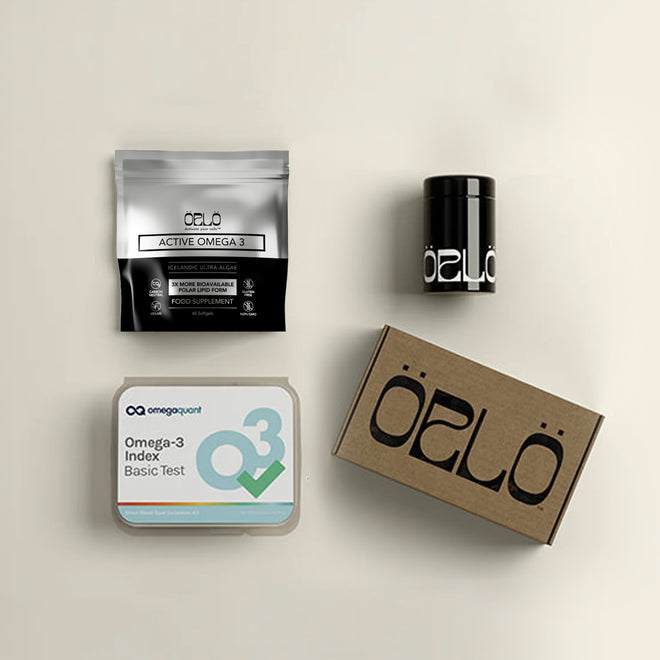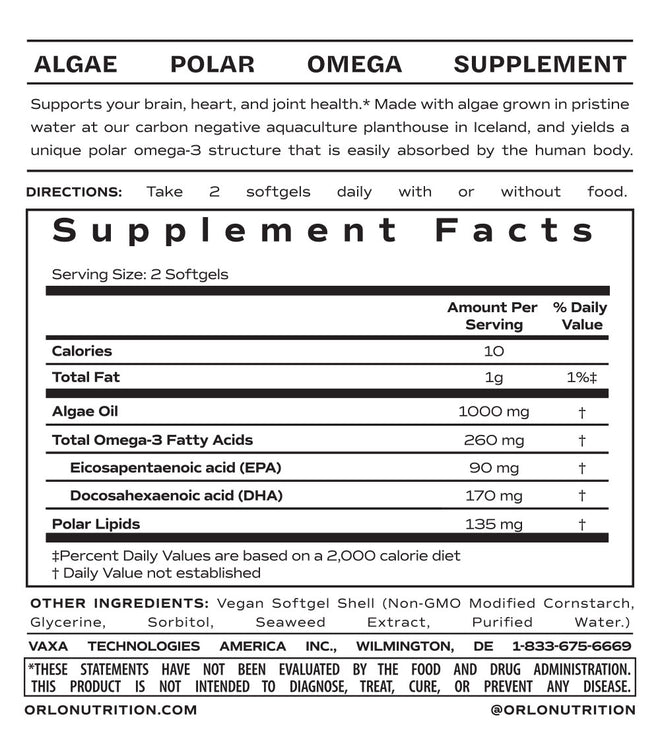Free shipping on purchases over $69
The Beauty of Polar Lipids
Dietary Fats: The Good, The Bad, and the Best
From Unsaturated to Saturated, Trans Fats to Natural Triglycerides and Polar Lipids, This Blog Spells It All Out
Fats, sugars and proteins make up the macronutrients our bodies need to function every day. Just like with sugars and proteins, there are many different types of fats -- each of which act a little differently in our bodies. In this article we will demystify the differences between types of fats so you can make more informed decisions. You’ll learn what makes polar lipids (phospholipids and glycolipids) different and even better than triglyceride omega-3 sources.
What are the different types of fat?
There are three primary classes of fats that you’ve probably heard about. Unsaturated fats, Saturated Fats and Trans fats.
Unsaturated Fats, including monounsaturated fats and polyunsaturated fats (PUFAs) are liquid at room temperature and are present in plant and seed oils, as well as in oily fish and algae oils. These are commonly referred to as the “good fats”. Eicosapentaenoic acid (EPA) and docosahexaenoic acid (DHA) are in a class of fats referred to as long-chain polyunsaturated fatty acids (LC-PUFAs). Okay, we have got to stop letting scientists come up with these acronyms! LC-PUFAs are health promoting and tend to regulate inflammatory responses in the body, returning systems to homeostasis or “balance” after an inflammatory event.
Saturated fats are solid at room temperature and are mainly found in animal products, though coconut oil, palm oil and palm kernel oil all contain higher levels of saturated fats. This makes them more shelf stable, and they are therefore sometimes considered more desirable for cooking or producing products with longer shelf lives. Common food sources of saturated fats include: cheese, butter, and other dairy products, meat, cookies and other grain-based desserts, and fast foods. While not necessarily “bad fats” they should be consumed in moderation. In the past, saturated fats were villainized, however current research suggests they may actually be neutral and have virtually no effect on increasing rates of heart and circulatory health problems.
Trans fats are also solid at room temperature, and while some trans fatty acids are naturally occurring, most are manufactured through a process called hydrogenation. This process entails adding hydrogen to unsaturated fatty acids by exposing the oil to high temperatures and using chemical aids. The result is an unnatural fatty acid formation that is either partially hydrogenated or fully hydrogenated. The appeal of this new fat, invented in the early 1900’s and popularized by Proctor and Gamble with the launch of Crisco shortening, was its shelf-stable nature and ease of use. This newfound cooking putty would replace butter or oil in baked goods and create food-like products with long shelf lives. It would therefore be less likely to oxidize, become discolored, or spoil. Common food sources include: shortening, no-stir peanut butter, margarine, baked goods, fried foods and fast foods. Labels showing “partially hydrogenated” or “hydrogenated” vegetable oils include trans fats.
The problem with trans fatty acid consumption is many fold. First, trans fats aren’t classically “food” any more. Chemically, they are only one carbon molecule different from plastic -- and if you leave a jar of margarine out, no flies or insects will go near it. Do the same with butter, and insects will visit your dish. This should scare you.
When you consume trans fats, your body will work to absorb the fatty substance, even though it’s not a natural food. The delta-5 and delta-6 desaturase enzymes that would have been used to break down healthy oils you consume focus instead on trying to absorb the trans fats. This means you simply may not absorb any of the plant-sourced omega-3s and omega-6s that were in your meal. And guess what -- those Omega-3s and Omega-6s are called essential fatty acids for a reason. Your body can’t make them and it needs them to survive -- just like vitamins.
So, the best thing to do is simply not consume trans fats, but unfortunately, if you eat fast food, baked goods, no-stir peanut butter, or margarine, you are likely eating trans fats. I encourage you to watch this quick video for a history of these three classes of fats if you have any doubt. It’s only about 5 minutes and is a good quick overview, even detailing that the Center for Disease Control (CDC) has asked all of us to limit consumption of trans fats as much as possible.

Triglyceride Fats
Triglyceride forms of fats are common in nature, and our bodies integrate the fatty acids they contain into our systems with relative ease. This is the form of fat you’ll see in most fish and algae oil. They are more bioavailable than other plant oils because they do not require complex enzymatic processes in order to integrate them into your system, offering instead a direct source of EPA and DHA. This means that even if you happened to eat something that contained trans fats, you would still see some benefit from consuming the omega-3 found in that fish or algae oil. But, even with this form of fat, some people still have trouble with standard fish and algae oils. They might experience loose stool, fishy burps, and the oil itself oxidizes (spoils) somewhat rapidly when exposed to heat or light and oxygen..
What are Polar Lipids?
Polar lipids are different. They are not quite liquid and not quite solid (somewhere in-between) as an already emulsified oil. Think of the mayonnaise you whipped up using the yolk of an egg, some vegetable oil and lemon juice. It was the polar lipids in that egg yolk that emulsified the oil to make your mayonnaise thicken.
Polar lipids are both water and fat soluble. They are able to be absorbed easily into our body tissues therefore. The polar head on the outside of the cell wall, and on the inside enables them to stay suspended in body fluids, move across cell membranes, and easily be absorbed into tissues. They can even cross the blood/brain barrier to support nerve and brain health, which can be critical for people who have trouble digesting fats, like those that have had their gall bladder removed.
While a healthy body (with a working gall bladder) produces sufficient bile to emulsify triglyceride-form fats, the multi-step process can be inefficient. Consuming polar lipids means that you don’t have to risk that potential loss.
Scientific research has shown that krill oil, an omega-3 source in the phospholipid (a polar lipid) form is 1.5 times more efficient than triglyceride form fish oil in terms of bioavailability. Furthermore, research on specific algae oils that contain two kinds of polar lipids -- phospholipids and glycolipids -- is even more efficient than krill oil, improving efficiencies as much as two times.
This is the class of products that Ӧrlӧ Nutrition specializes in producing in our aquaculture planthouse in Iceland. Our omega-3 products contain both phospholipids and glycolipids for a total efficiency that tops triglyceride form algae and fish oils by more than three times, and krill oil by two times. This is the most bioavailable omega-3 available and it’s made in the most regenerative way possible using renewable energy, consuming CO2 and releasing oxygen as a byproduct. Learn more about our unique carbon-negative plant in this blog.















